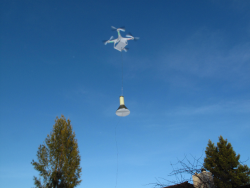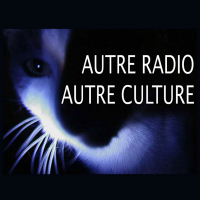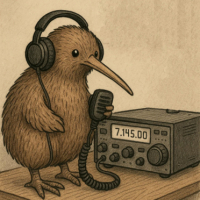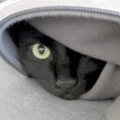n6gn
About
- Username
- n6gn
- Joined
- Visits
- 5,482
- Last Active
- Roles
- Member
- Points
- 31
-
HT004a / LNA / Anyone used one?
Martin
The differentiating point I was trying to make is about 'local environment' You wrote that further improvement can only be improved by using a better antenna. I was trying to make clear that there can be and usually are multiple causes for increased noise in a local environment. Some of these are actually arriving by way of the perceived antenna due to near-field coupling but a second type come in after that in the form of CM currents and other kinds of systemic ingress.
A preamplifier at the antenna may actually help reduce this second type and create an overall improvement. This improvement would not be due to an antenna change, at least not what was thought to be the antenna. In fact, in that case "the antenna was not the antenna" ! The system had multiple but separable sources of unwanted ingress.
It is a widely held belief that the shield on single ended/coaxial cable prevents ingress from occurring there. This is only true for TEM systems where there is zero common mode current, unwanted current flowing on the outside of the coax. When such current does flow on the outside, then imbalance at either end converts some of that current to differential current in the desired TEM component.
Because the systems we use often deal with such small levels - down near the thermal noise limit of KTB, it can require far more system balance to sufficiently reject unwanted currents than is achievable with passive hardware. So-called 'broadband baluns' are often only able to achieve 20-30 dB of balance at best. This can be many ten's of dB less than is necessary to force the currents due to unwanted conversion below the incoming noise floor.
Unwanted current traveling through the groundplane of the KiwiSDR, for example, is converted "only" 80 dB down to current through the center conductor of the coax and injected into the ~50 ohm input impedance of the preamp. That CM ==> differential conversion can and does easily damage reception SNR, often without the knowledge of the user who may think "I hooked up the coax and the noise floor came up, I guess it came in from my antenna" when in fact the majority of it did not.
Our goal is to transfer the DX (far-field) propagated SNR present within the radiation resistance of our antennas to the detector of our receiving system. Without understanding and identifying the multiple mechanisms by which this can be degraded and which are active in a particular system, there really are no simple answers to improving a [poorly behaving] receiving system. As you suggest, blindly adding a preamplifier may make no improvement at all and may only make things worse due to IMD, internal noise or additional conversion from CM ==> differential QRN.
Without understanding that "our antennas are not what we may think they are" and "coax shield does not prevent unwanted ingress" the techniques we might use to improve our results likely will not deliver the improvement that is possible.
-
Flatness of KiwiSDR response < 500 kHz?
Phil,
Addressing your noise issues and not the spectral display, I would encourage you not to immediately jump to whack-a-mole in seeking to improve Kiwi Performance. Rather, I have found it very productive to examine the coupling mechanism rather than simply trying to stay on top of suppressing interference sources.
For electrically small structures, which almost everything at LF and below is, the radiation resistance is minuscule. For virtually all situations we encounter actual inverse-square radiation from any sources/antennas is far below the interference levels the Kiwi reports. Thus I think it worthwhile to look at near-field and, particularly common mode (CM) coupling mechanisms.
In my experience, the dominant undesired coupling mechanism into the Kiwi is CM current over the path between wired LAN connection and the SMA-end of the Kiwi PCB. This includes the BB ground plane, cape connections and ground plane current paths on the Kiwi PCB. If one uses an isolated source having low self-capacitance (and then perhaps further reduces the potential for CM with a low inter-turn capacitance 1:1 transformer to create a test current source), -10 dBm on 15 MHz injected between the BB RJ45 shell and the Kiwi Antenna SMA results in about -85 dBm displayed on the Kiwi. This is more than 70 dB above the Kiwi noise floor in 1 Hz. At 100 kHz it's only down another 22 dB or so, still far above what the Kiwi can easily detect. It's for this reason that for each of my four Kiwis at the home QTH I have gone to WiFi interface, BBG/Kiwi's as described elsewhere on this forum and BBAIs with their native WiFi interface.
At LF, the noise floor of interest will depend upon the antenna system. Broadband electrically small antennas (they all are at LF and below) have antenna factors rising at 20 dB/decade while the ITU propagated noise, though all over the map with diurnal and seasonal variations, generally falls at about 25 dB/decade of frequency. Thus the noise limit of interest may be quite a bit above the Kiwi's native floor of ~ -157 dB/1-Hz but it still may be well below the kinds of levels that CM current injected via the LAN, PS or even GPS lines might be able to produce within the Kiwi.
For the Kiwi, and really every receive system we use "ground isn't ground" except by definition. But care in examining coupling mechanisms, reducing current in CM paths and symmetry (passive and active baluns) can really pay off and gains made here tend to apply no matter what new SMPS or other noise source pops up in the environs.
As a proof-of-performance it's also very useful to use symmetric antenna structures rather than single ended ones, e.g. monopoles, because the intended antenna, e.g. dipole, can be shorted to observe and confirm that the residue CM is not significantly limiting system performance. Considering the many-10s of dB of symmetry/CM_rejection we may need broadband RF baluns really are insufficient over the 3-4 decades the Kiwi covers.
When CM has been removed, there can still be the issue of near-field coupling to deal with, but I digress...
Glenn n6gn
-
Power-over-USB modifications for a KiwiSDR
I'm attaching a write-up of what has worked well for me to improve Kiwi noise performance by reducing common-mode current paths through the Kiwi.
For a stock, wired-LAN Kiwi it is very common for noise and coherent signal current on the LAN cable to find a path through the Kiwi PCB ground and out either the Power Supply return or, more often, via common mode current on the antenna feed attached to the SMA input. This kind of QRM/QRN is insidious because it may mostly show up when an antenna is attached causing the user to believe the problem is elsewhere.
By operating the Kiwi with an inexpensive WiFi router, powered from the Kiwi and connected by only a single micro_USB <==> USB-A cable, the common mode current paths which can cause this degradation can be eliminated.
Because of the success of this scheme in both improving performance of previously wired-LAN installations and also the possibility of building a completely isolated, portable Kiwi system to use as adiagnostic tool for improving Kiwi and general site performance, I'm offering this description.
Write me for more information or for the 3D printable file for the USB clamp described.
Glenn n6gn
-
External GNSS-disciplined rubidium input?
I know very little about the TDoA algorithm but I suspect both @jks and @Christoph are correct. Between the limited bandwidth and especially ionospheric propagation, typical Kiwi clock imperfection probably does not become an issue.
For an appreciation of this, you are welcome to examine the phase of one of NIST's transmitters received via a visual line-of-sight 20km path and displayed on a Kiwi having a ~.1 ppb (1e-10) GPS-disciplined external clock:
and by a different 'stock' GPS-corrected Kiwi at the same distance and also not receiving via the ionosphere:
Then have a look at a time/frequency signal via the ionosphere, CHU on 14670 kHz
(3) N6GN CHU 14670
or if conditions don't permit, perhaps 7850 kHz
Whether or not the the phase wander from the standard Kiwi in (2) causes significantly extra error compared to the bandwidth and sample-length restrictions and ionospheric variations would need to be examined more closely but I rather doubt it. Thus, improving the Kiwi's local clock probably wouldn't make much difference in the TDoA accuracy or resolution.
I think this is the primary reason that long-distance HF standard frequency transmissions tend to be only useful to .1 ppm. 1e-7, or so. Even though as-transmitted error may be 1e-12 the ionospheric path length is varying too much, particularly near the MUF for better accuracy.
-
Power line noise ?
The family of lines in 6.5-7 MHz you suggest seem to me to be power line related, though this is true of many SMPS noise sources. When I detect in 10 kHz AM and analyze with Audacity I see astrong 50 Hz family/component
This is as expected from an imperfectly filtered SMPS input. Furthermore, the spectral width of the lines is consistent with jitter/phase noise of a switcher's rate and it appears to have stronger even harmonic components, as is common from full-wave rectification.
But as to the actual source and coupling mechanism - that's harder to say. There are so many uses for SMPS supplies these days, some of them for lighting related power that an after-dark correlation is not unlikely.
To put things in perspective, while your noise floor is no doubt raised considerably by this, you are in pretty good company and a lot kiwiSDRs reveal similar and worse results. If you are using a well matched antenna, your noise is about 30 dB above kTB which isn't so dreadful at that frequency. OTOH, it may be higher than that if your system is not well matched to the radiation resistance. You could be seeing CM currents, current in the earth below or other coupling mechanisms. I suggest not first considering it to be inverse-square radiation. That is actually much rarer, in my experience.
Glenn n6gn





